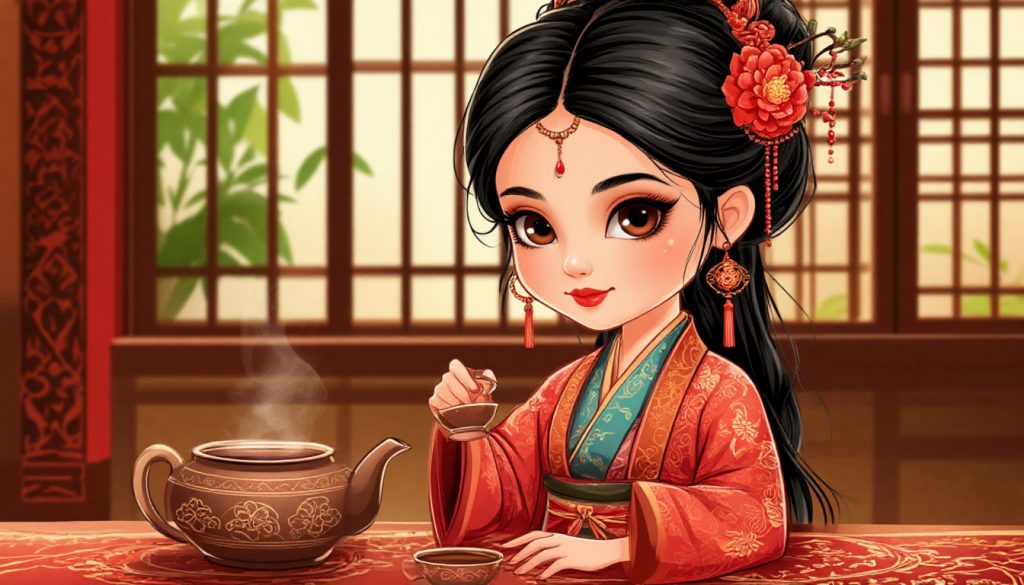Tea is one of the most ancient and widely consumed beverages in the world. Whether served hot or cold, black or green, in ceremonies or casual cups — tea plays a central role in many cultures. Beyond its rich history and comforting aroma, tea is also known for its health benefits and variety of natural compounds that support both body and mind. This article explores what tea is, its types, health effects, and why it’s much more than just a drink.
What Is Tea?
Tea is made by steeping the leaves of the Camellia sinensis plant in hot water. All traditional teas — including black, green, white, oolong, and pu-erh — come from this single plant. Differences in flavor and appearance result from how the leaves are processed after harvesting.
Main Types of Tea
| Type | Processing Method | Caffeine | Flavor Profile |
|---|---|---|---|
| Green | Steamed or pan-fired | Moderate | Fresh, grassy, slightly bitter |
| Black | Fully oxidized | High | Bold, malty, rich |
| White | Minimally processed | Low | Light, delicate, floral |
| Oolong | Partially oxidized | Moderate | Complex, smooth, nutty or fruity |
| Pu-erh | Fermented and aged | Variable | Earthy, mellow, deep |
In addition, herbal teas (such as chamomile, peppermint, and rooibos) are made from plants, flowers, or roots and are naturally caffeine-free.
Health Benefits of Tea
Tea contains natural compounds such as antioxidants, flavonoids, and L-theanine that contribute to its health benefits. When consumed regularly and without excessive sugar or milk, tea may support:
1. Heart Health
- May lower blood pressure and cholesterol
- Green and black teas associated with reduced risk of heart disease
2. Mental Alertness and Calm
- Caffeine enhances focus
- L-theanine promotes relaxation without drowsiness
- Improves mood, especially in moderate drinkers
3. Metabolism and Weight Management
- Green tea can slightly increase fat burning and metabolic rate
- Some teas reduce appetite or cravings
4. Antioxidant Protection
- Polyphenols protect cells from damage
- May reduce inflammation and slow signs of aging
5. Digestive Support
- Herbal teas like peppermint, ginger, and fennel soothe the stomach
- Certain teas reduce bloating or nausea
Cultural Importance of Tea
Tea is not just a beverage — it’s a symbol of hospitality, mindfulness, and tradition across the world:
- China: Birthplace of tea, home to ancient tea ceremonies
- Japan: Green tea is used in chanoyu (the way of tea)
- United Kingdom: Black tea is a staple of daily life, especially during “afternoon tea”
- India: Chai is a spiced milk tea central to social culture
- Morocco: Sweet mint tea is served as a gesture of friendship
In each culture, tea connects people through ritual, sharing, and reflection.
Are There Any Risks?
Tea is safe for most people, but there are a few cautions:
- Excess caffeine may cause insomnia or anxiety in sensitive individuals
- Tannins in tea can interfere with iron absorption if consumed in large quantities
- Overconsumption of certain herbal teas can cause unwanted effects — always check safety during pregnancy or medication use
Best Ways to Enjoy Tea
- Brew fresh, loose-leaf tea for best flavor and nutrient retention
- Avoid adding sugar or syrups
- Experiment with different types and steeping times
- Create a daily tea ritual for relaxation and reflection
Conclusion
Tea is more than a beverage — it’s a cultural heritage, a wellness aid, and a calming ritual. With a vast range of flavors, types, and health benefits, tea can be adapted to suit every mood and moment. Whether you’re sipping a bold black tea to start your day or unwinding with a soothing herbal blend at night, tea offers comfort, clarity, and connection in every cup.
Glossary
- Antioxidants – compounds that help prevent cell damage
- L-theanine – an amino acid found in tea that promotes relaxation
- Tannins – natural compounds in tea that can affect taste and nutrient absorption
- Oxidation – a chemical process affecting tea’s flavor and color
- Chai – Indian-style tea with spices and milk


